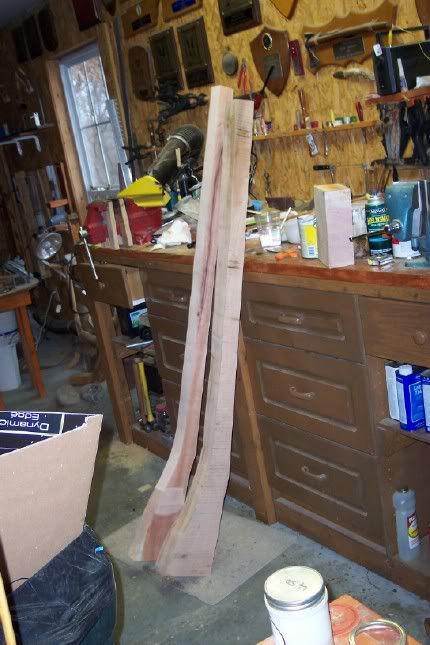I don't have a kiln or proper dryer, so I do it the old way.
Cut them about 3" thick & seal the ends & All Knots or grain runout with sealant used for Logs.. Paint will work or wax, but it needs several coats to seal it well.
Stack them with a furring strip on each end & then 12" apart. Stack the next plank on it with the furring strip right over the other one. When you get to the top, lay it solid with solid concrete cap blocks & let it sit 3-4 years & then check with a digital humidity tester.
This stacking will keep the blanks from twisting & dry slowly. Spray it once a year with termite spray to keep the bugs out of it.
That being said, lots of people save logs & slabs for rifles. Normally, if you saved 10 large run-of-the-mill planks, you will be lucky to get 5 good stocks, as every plank will not produce a quality stock.
Longrifle stocks are the hardest to produce & have quality, as you need curve thru the wrist & then straight & few or no knots in it.
Last bunch I did, I had 9 nine foot planks 28" wide, 3" thick. I ended up with 9 good blanks & the rest was furniture wood.
Now some would have gotten 3-4 blanks from every plank, but I am picky about my blanks. If it is not damn near perfect, I don't cut a blank from it.
Others will cut & sell anything, which is why you continuously see people on here with broken wrists on rifles, simply because the stocks were cut from blanks & the grain not correct at the wrist for a quality stock. (IMHO)
It would be very disappointing for me to put all the time it takes to build a rifle, & it break or split at the wrist because of poor grain structure there. So I am quite picky of the blanks I cut or build on.
Keith Lisle






